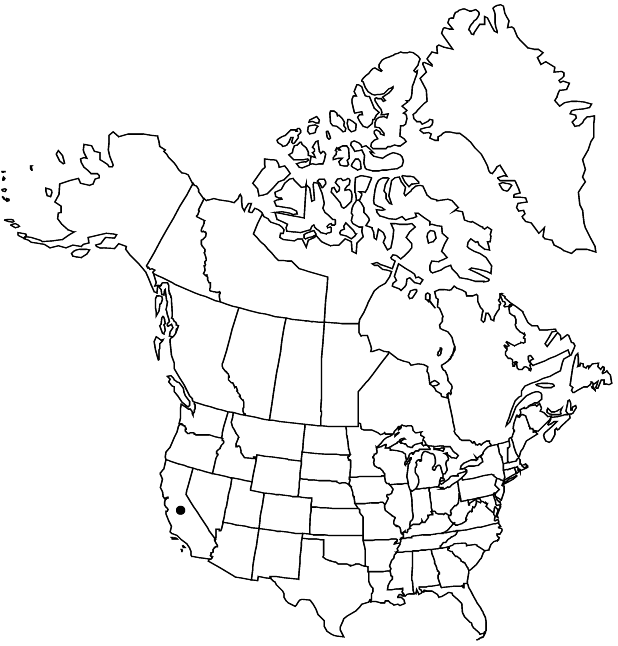Difference between revisions of "Dodecatheon subalpinum"
Leafl. W. Bot. 2: 37. 1937 ,.
FNA>Volume Importer |
imported>Volume Importer |
||
| (6 intermediate revisions by 2 users not shown) | |||
| Line 7: | Line 7: | ||
}} | }} | ||
|common_names=Sierran shootingstar | |common_names=Sierran shootingstar | ||
| + | |special_status={{Treatment/ID/Special_status | ||
| + | |code=E | ||
| + | |label=Endemic | ||
| + | }} | ||
|basionyms= | |basionyms= | ||
|synonyms={{Treatment/ID/Synonym | |synonyms={{Treatment/ID/Synonym | ||
|name=Primula subalpina | |name=Primula subalpina | ||
|authority=(Eastwood) Mast & Reveal | |authority=(Eastwood) Mast & Reveal | ||
| + | |rank=species | ||
}} | }} | ||
|hierarchy=Primulaceae;Dodecatheon;Dodecatheon subalpinum | |hierarchy=Primulaceae;Dodecatheon;Dodecatheon subalpinum | ||
| Line 26: | Line 31: | ||
|elevation=2100-4000 m | |elevation=2100-4000 m | ||
|distribution=Calif. | |distribution=Calif. | ||
| − | |discussion=<p>Dodecatheon subalpinum is known from the high western slopes of the central and southern Sierra Nevada from Tuolumne County to Tulare County. This high-elevation ecotype might be considered a variety of D. hendersonii, for which the epithet yosemitanum H. Mason is available.</p> | + | |discussion=<p><i>Dodecatheon subalpinum</i> is known from the high western slopes of the central and southern Sierra <i>Nevada</i> from Tuolumne County to Tulare County. This high-elevation ecotype might be considered a variety of <i>D. hendersonii</i>, for which the epithet yosemitanum H. Mason is available.</p> |
|tables= | |tables= | ||
|references= | |references= | ||
| Line 35: | Line 40: | ||
-->{{#Taxon: | -->{{#Taxon: | ||
name=Dodecatheon subalpinum | name=Dodecatheon subalpinum | ||
| − | |||
|authority=Eastwood | |authority=Eastwood | ||
|rank=species | |rank=species | ||
| Line 49: | Line 53: | ||
|publication title=Leafl. W. Bot. | |publication title=Leafl. W. Bot. | ||
|publication year= | |publication year= | ||
| − | |special status= | + | |special status=Endemic |
| − | |source xml=https:// | + | |source xml=https://bitbucket.org/aafc-mbb/fna-data-curation/src/2e0870ddd59836b60bcf96646a41e87ea5a5943a/coarse_grained_fna_xml/V8/V8_553.xml |
|genus=Dodecatheon | |genus=Dodecatheon | ||
|species=Dodecatheon subalpinum | |species=Dodecatheon subalpinum | ||
Latest revision as of 22:44, 5 November 2020
Plants 7–15(–25) cm; scape glabrous. Caudices not obvious at anthesis; roots reddish, bulblets usually present. Leaves (2.5–)3–8(–10) × 0.5–1.5(–1.8) cm; petiole usually not winged; blade oblanceolate to narrowly spatulate, base usually slightly decurrent onto stem, gradually tapering to petiole, margins entire, sometimes slightly undulate, surfaces glabrous. Inflorescences 1–5(–8)-flowered; bracts linear to narrowly lanceolate, 2–6 mm, glabrous. Pedicels 1–2(–3.5) cm, glabrous. Flowers: calyx green, 3.5–6 mm, glabrous, tube 2–3 mm, lobes 5, 2.5–4.5 mm; corolla tube usually yellow, sometimes white with dark maroon, thick, wavy ring, lobes 5, usually magenta, sometimes white, 5–9(–12) mm; filaments connate, tube dark maroon, 2–3.5 × 1–1.5 mm; anthers 3–4 mm; pollen sacs yellow, streaked with purple, connective dark maroon, transversely rugose, (infrequently seemingly longitudinally wrinkled); stigma not enlarged compared to style. Capsules tan, valvate, cylindric-ovoid, 6–10(–13) × 3–4.5 mm, glabrous; walls thin, pliable. Seeds without membrane along edges. 2n = 66.
Phenology: Flowering summer.
Habitat: Moist slopes, mainly shady places in conifer woodlands or in meadows and along stream banks
Elevation: 2100-4000 m
Discussion
Dodecatheon subalpinum is known from the high western slopes of the central and southern Sierra Nevada from Tuolumne County to Tulare County. This high-elevation ecotype might be considered a variety of D. hendersonii, for which the epithet yosemitanum H. Mason is available.
Selected References
None.
